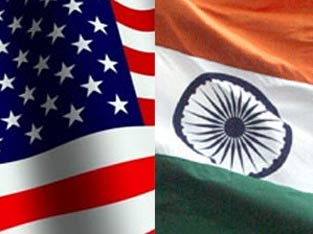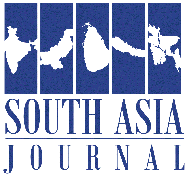
The India-U.S. alliance remains a resilient and sustainable partnership, unaffected by Operation Sindoor against Pakistan or U.S. trade deals with other nations, as its deep strategic, economic and cultural foundations enable India to transform diplomatic frictions and global trade shifts into opportunities for strengthened bilateral leadership.
Introduction: Diplomatic Resilience amid Operation Sindoor
Following Operation Sindoor on May 7, 2025, a response to the April 22 Pahalgam attack that killed 26 civilians, India sent seven all-party parliamentary delegations to 33 countries, including UNSC members, to underscore its zero-tolerance stance against Pakistan-sponsored terrorism. Led by MPs Shashi Tharoor, Ravi Shankar Prasad, and Kanimozhi, they presented dossiers tying Pakistan to the 2008 Mumbai and 2019 Pulwama attacks, justifying India’s strikes on terror camps in Pakistan and Pakistan-occupied Kashmir, and denouncing Pakistan’s ‘nuclear blackmail.’ They urged Pakistan’s FATF grey-listing. Launched May 23, the campaign sought to isolate Pakistan. In the USA, Tharoor’s delegation won Congressional backing, with Ro Khanna lauding India’s resolve, but President Trump and Secretary Rubio’s push for de-escalation and ceasefire mediation drew New Delhi’s ire for perceived leniency. The UK and EU urged restraint while acknowledging India’s self-defense rights; Colombia’s stance equating terrorist and civilian losses provoked Tharoor’s sharp rebuttal.
Fears that President Donald Trump’s claims of mediating a ceasefire between India and Pakistan during Operation Sindoor could fracture the India-U.S. alliance or bilateral trade are grossly overstated. The U.S. State Department’s assertion of a U.S. brokered truce, which conflicted with India’s insistence on bilateral decision-making, stirred fleeting diplomatic ripples. India’s swift rebuttal, led by Foreign Minister S. Jaishankar and Foreign Secretary Vikram Misri, affirmed the ceasefire as a bilateral achievement, showcasing New Delhi’s diplomatic resolve. This clarity reinforces India’s strategic autonomy, a cornerstone of its alliance with the United States. Past instances of navigating U.S. critiques on domestic policies demonstrate that rhetorical missteps, such as Trump’s exaggerated remarks during his Middle East tour, fade against decades of trust. Platforms like the 2+2 Ministerial Dialogue and Defence Policy Group ensure seamless engagement, rendering such statements inconsequential. Fears of re-hyphenating India-Pakistan relations are baseless, as India’s rejection of third-party mediation, backed by U.S. support for designating Pakistan-based terror groups as U.N. listed entities, upholds the de-hyphenation policy. Operation Sindoor, a measured response to a terror attack, enhanced India’s credibility as a security partner, further solidifying bilateral trust which is unfortunately being misinterpreted by some sections of the society and leadership as India’s weakness against the US global hegemony.
Economic Synergy and Trade Diversification
Concerns that Trump’s attempt to link trade concessions to the ceasefire threatens negotiations, or that U.S. trade deals with countries like Turkey,Saudi Arabia Mexico, or Japan signal a dead end for India-U.S. relations, are misplaced. Commerce Minister Piyush Goyal’s visit to Washington on May 17, 2025, to engage U.S. Trade Representative Jamieson Greer and Commerce Secretary Howard Lutnick signals unwavering commitment to trade talks. The Bilateral Trade Agreement, targeting $500 billion in two-way trade by 2030, reflects mutual ambition. India’s clarification that trade was not discussed during ceasefire talks isolates these issuesnand therefore needs not to be blown out of the proportion. The U.S. trade deficit with India, a modest $36 billion in 2024 compared to $295.5 billion with China, fosters a cooperative negotiating environment and is enough of the evidence of sustained bilateral relations between the two nations. Also bilateral trade, reaching $146 billion in 2019, continues to grow, with U.S. investments in India’s semiconductor and clean energy sectors signalling long-term synergy. The Indian public and especially some media analysts whonare writing total assumptions and biased reports on this subject need not be overly anxious about U.S. trade diversification and need not to be taken seriously by public. These agreements, driven by the U.S. friend-shoring strategy, complement India’s role as a key partner. India’s 22% surge in electronics exports since 2022, fuelled by the China-plus-one trend, positions it as a primary beneficiary of U.S. supply chain shifts. The United States’ $2 billion investment in India’s semiconductor industry in 2024 and commitments to co-develop 6G infrastructure underscore India’s unique strategic value, unmatched by smaller economies. India’s 6.5% GDP growth in FY 2024-25 and its digital economy, projected to reach $1 trillion by 2030, ensure its indispensability to U.S. economic interests, which is unfortunately not being highlighted by critics.
Strategic Pathways for Deepening Ties
Some of the arguments that cement the India-U.S. alliance’s resilience are the advancements in co-producing F414 jet engines and Predator drones; the U.S.-India Initiative on Critical and Emerging Technology accelerating AI, quantum computing, and 6G collaboration; Also India’s Global South leadership during its G20 presidency complementing U.S. governance goals; intensified counterterrorism intelligence-sharing post-Sindoor; and $2 billion in U.S. investments in India’s solar and hydrogen projects since 2024 is enough to understand the nature of this strong alliance and strategic partnership. To further strengthen ties, India should accelerate Bilateral Trade Agreement negotiations by autumn 2025, offering tariff reductions on U.S. goods while safeguarding agriculture and aligning intellectual property regulations to unlock technology transfers.
Already India offers zero tariffs on U.S. motorcycles, medical devices, and selected agricultural goods (excluding wheat, maize, rice, and dairy); the U.S. lowers tariffs on Indian pharmaceuticals, textiles, IT services, 5G equipment, clean energy components, cyber security solutions, and quantum computing hardware. India streamlines IP and export controls to align with U.S. standards, enabling co-production in semiconductors, AI, defence, renewable energy, cyber security, and quantum technologies. The agreement prioritizes clean energy, AI, 6G infrastructure, digital trade, and cyber security to strengthen global value chains. Tariff reductions and IP frameworks will be finalized by autumn 2025, with expanded cooperation in green technology, digital trade, and infrastructure by 2030. Expected outcomes include a 27% increase in India’s exports in pharmaceuticals, IT, and clean energy by 2028, $22 billion in U.S. FDI by 2029, and positioning India as a hub for U.S.-aligned supply chains, reducing reliance on China.
India should deepen defence cooperation through the Defence Technology and Trade Initiative and INDUS-X, focusing on jet engines, drones, AI, cyber security, and quantum computing, while expanding exercises like Tiger Triumph. The Quad’s silence during Operation Sindoor respects India’s sovereignty, and its focus on countering China aligns with India’s priorities. India’s integration into the Combined Maritime Forces strengthens security ties. Domestic criticism, amplified by upcoming Bihar elections, is transient, as Prime Minister Narendra Modi’s stance against terrorism resonates with public sentiment. The 4.4 million-strong Indian Diaspora in the United States, driving $48.2 billion in FDI from 2000 to 2021, fosters cultural bonds, countering anti-U.S. sentiments. Engaging this community through the India-U.S. CEO Forum and Fulbright-Nehru exchanges will drive investment. Leading Quad and I2U2 initiatives, advocating WTO reforms, and securing U.N. terror designations will align with U.S. priorities. Expanding the Strategic Clean Energy Partnership with community-led solar and hydrogen projects will support India’s net-zero goals. By balancing ties with the United States, Russia, and China, India maturely ensures the alliance’s sustainability.
The State of India -US Relations Today
The fact remains that the India-U.S. strategic alliance remains a cornerstone of global geopolitics, navigating the complexities of President Trump’s trade policies with resilience and pragmatism. Despite trade frictions, including tariffs and negotiations over market access, both nations continue to deepen their partnership through robust defense cooperation, exemplified by joint exercises like Malabar and agreements like COMCASA, alongside shared commitments to countering China’s influence in the Indo-Pacific. The Quad framework and burgeoning technology collaborations, such as the Initiative on Critical and Emerging Technology (iCET), underscore mutual strategic interests. While economic uncertainties persist due to Trump’s protectionist stance, the enduring alignment on security, climate, and multilateral engagement ensures that India and the U.S. maintain a dynamic, forward-looking relationship, balancing trade challenges with unwavering cooperation to address regional and global imperatives.
Last Word
The India-U.S. alliance fortified by strategic alignment, economic vitality, and shared innovation, remains unshaken post Operation Sindoor or amid the U.S. trade diversification. India’s diplomatic autonomy, robust trade negotiations, and strategic role as a counterweight to China ensure its indispensability. By accelerating trade talks, deepening defence ties, leveraging its diaspora, and aligning on multilateral and climate goals, or India’s good will project continuation in Afghanistan by engaging actively with Taliban 2.0 can cement this enduring colossus, positioning the nation as global leader.
